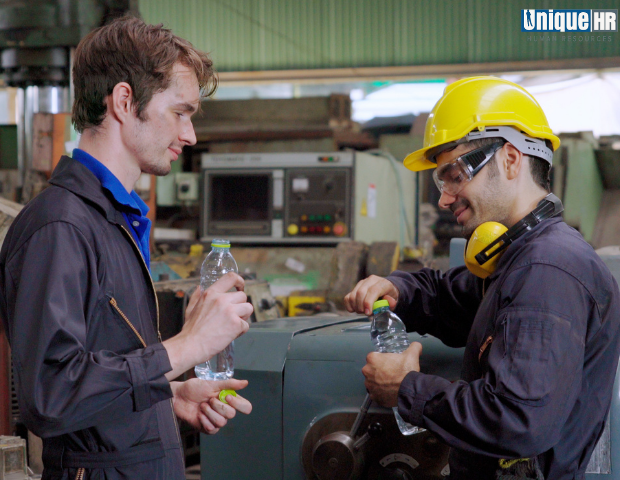The summer heat is out in full swing, and for many laborers, that means working in hot indoor and outdoor environments for a long time.
Being exposed to such conditions can heat-related illnesses that can cause physical harm and even death.
These risks are not for the employee alone. Employers must be wary of these conditions and provide a workplace designed to prevent or rid these hazards altogether.
It is important to note that Occupational Safety and Health Administration (OSHA) has no specific standard for heat stress. Still, the General Duty Clause from the Occupational Safety and Health Act protects employees. The Act states that employers must provide a place of employment free of recognized hazards likely to cause physical harm or death.
WHAT IS HEAT ILLNESS?
The body maintains an average temperature and, when exposed to high temperatures, rids itself of excess heat by varying the rate of blood circulation and releasing fluid through the sweat glands. Through evaporation of the sweat, the body cools.
That process disrupts when temperatures approach average skin temperature, and the body struggles to maintain that average temperature. Blood brought to the body’s surface cannot cool. Thus, sweat becomes the primary means of lowering body temperature. Sweat must evaporate for this to work, but high humidity can hinder its ability to do so, and the process of maintaining body temperature is seriously impaired.
WHAT CAN HAPPEN?
Exposure to high heat can affect workers’ safety and health.
Heat can lead to more severe workplace accidents because dizziness, sweaty palms, and fogged safety goggles put employees at risk. The likelihood of poor judgment also increases as the exposure to high temperatures causes confusion, tiredness, and irritability. It can potentially lead to accidental burns from hot surfaces or steam.
When it comes to health, hot environments can cause heat cramps, fainting, heat rash, heat exhaustion, and heatstroke.
Common signs of heat illnesses include:
- Dizziness
- Headaches
- Fast heartbeat
- Nausea
- Weakness
- Cramps
- Confusion
- Fainting
- Convulsions
HOW TO PREVENT IT:
Hydration is critical: Stay hydrated. Drink at least one cup of water every 15 to 20 minutes, and don’t wait until you are thirsty to drink.
Care about what you wear: Dark colors and heat don’t mix, so it’s best to wear light-colored, loose-fitting, and breathable clothes if possible. A hat also helps when in direct sun. If you have a face covering, change it if it gets wet or soiled.
Get acclimated: Three in every four fatalities from heat illness occur during the first week of work. The body needs time to build tolerance, so take breaks and increase the duration of intense work in the heat a little each day. Start slow if you’re a new or returning worker.
Have a plan: It’s crucial that you are ready for anything. Have a plan in case of an emergency. Train for it and even rehearse or quiz each other. Know where you’re at in case you need to call 911.
Take a break: Don’t be afraid to take a break and find some shade. It’s okay to work hard but pushing too hard and overworking yourself can put you at risk. Take small breaks and be mindful of what your body is feeling.
* THIS COMMUNICATION IS FOR INFORMATIONAL PURPOSES ONLY; IT IS NOT LEGAL, TAX, OR ACCOUNTING ADVICE; AND SHOULD NOT BE ACTED UPON AS SUCH. THIS POST MAY CONTAIN HYPERLINKS TO WEBSITES OPERATED BY PARTIES OTHER THAN UNIQUEHR. SUCH HYPERLINKS ARE PROVIDED FOR REFERENCE ONLY. UNIQUEHR DOES NOT CONTROL SUCH WEBSITES AND IS NOT RESPONSIBLE FOR THEIR CONTENT.


